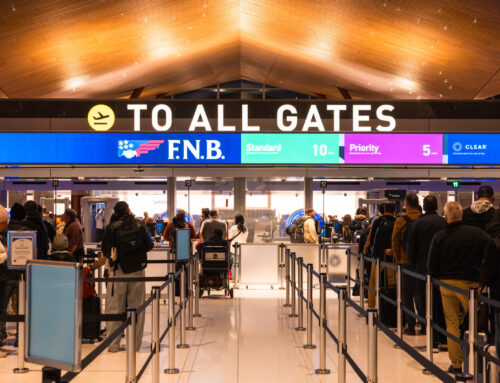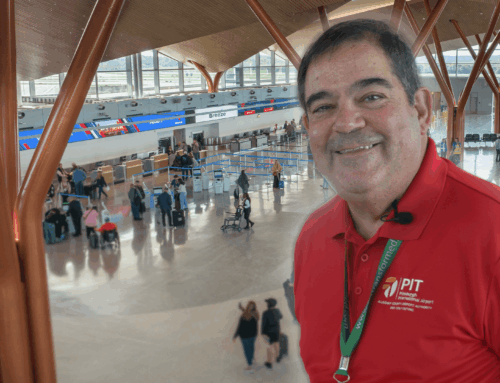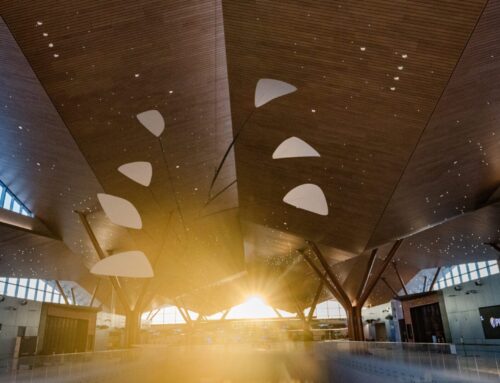A Pavilion in Penn’s Woods Part 2: A Gateway to the World
How collaboration and community created the design for an airport inspired by Pittsburgh
By Rocco Pacella & Oscar Rzodkiewicz
Published October 28, 2024
Read Time: 5 mins
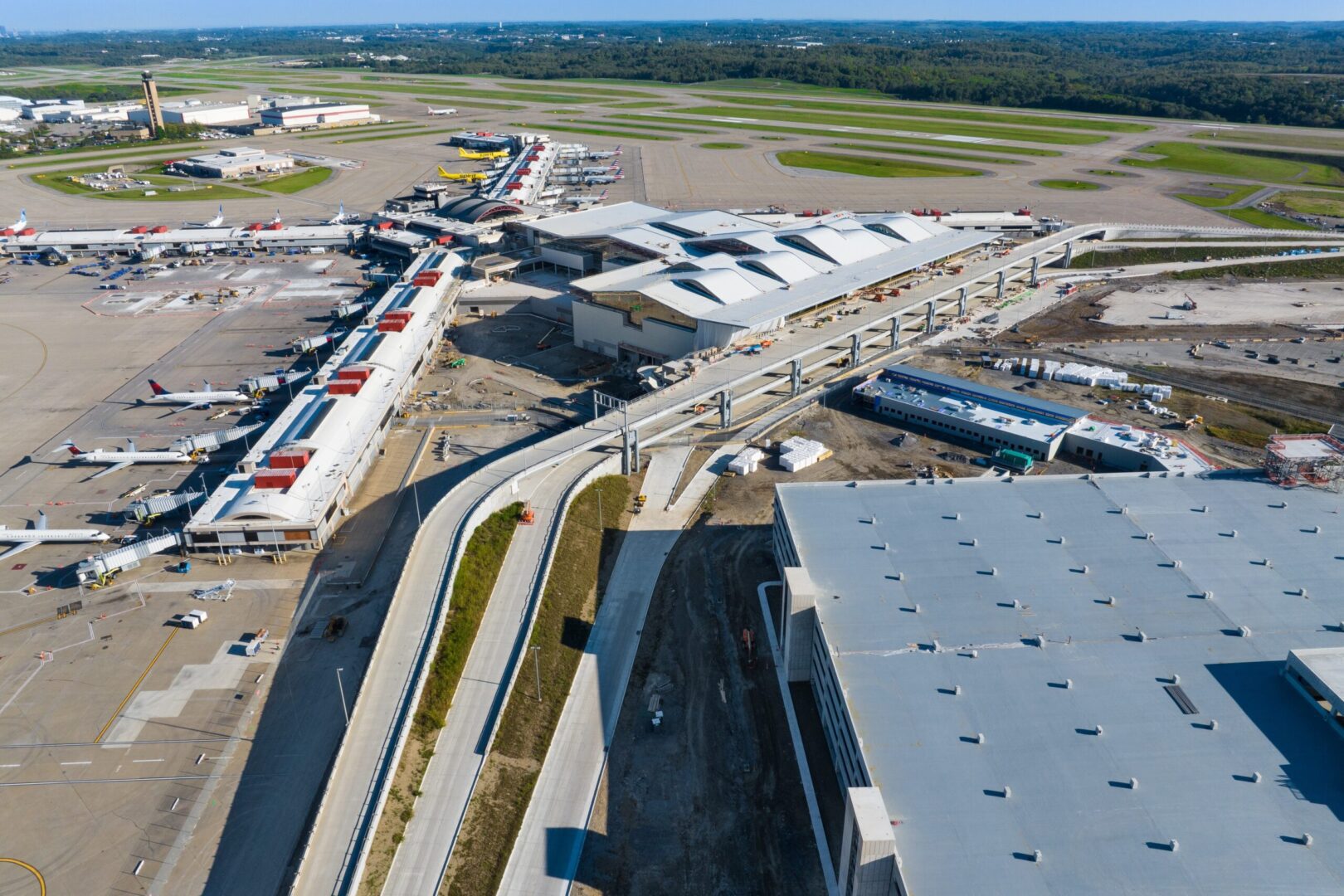
Editor’s Note: This story and video are the second of a two-part series showcasing the architectural design of Pittsburgh International Airport’s new terminal. Click here to view Part 1.
At its best, an airport complements the community it serves; inspired by its attributes even as it seeks to amplify them.
Pittsburgh will soon have the airport it deserves, one designed by a team of architectural experts to represent a region that for generations has defined itself through its natural environment, its innovative determination and the people and traditions that make it a community.
The new Pittsburgh International Airport terminal encourages connection and perspective through an experience representative of Western Pennsylvania.
PIT has been a leader in innovation for a decade, redefining the role of an airport in a way that reflects the spirit of a region on the rise. With a new terminal arriving in 2025, it seems fitting that the airport’s modernized structures should exemplify its community.
Guided by a design concept now known as NaTeCo – Nature, Technology, Community – the new PIT will be a gateway bringing the world to Pittsburgh, and a representation that defines Pittsburgh to the world.
Context for design
To understand Pittsburgh, you have to know its origins. Pennsylvania was founded in 1681 via land grant from Charles II of England to William Penn.
What is now a commonwealth takes its name in part from Admiral Sir William Penn because his son, the humbler man to whom the land was granted, was also named William Penn. The province was abundant with forests, or woods – silvae, in Latin.
Late 17th Century monarchs were creatively literal when naming colonies, ergo, Penn’s Woods… Penn-silvae… Pennsylvania.
“We designed the new terminal as a pavilion in Penn’s Woods,” said Luis Vidal, founder and president of Luis Vidal + Architects, part of the architectural team that designed the new terminal.
The design concept of NaTeCo incorporates core elements of the region into the new PIT terminal, creating an improved visitor experience that promotes connection.
A collaborative approach
When CEO Christina Cassotis began her tenure at PIT in 2015, the airport was in the midst of a master planning process, addressing much-needed updates and eventually adapting itself to become what is known as an origin-and-destination airport.
“We realized we had a real opportunity to modernize our infrastructure,” said Cassotis, “and to really have it reflect and serve the community through the design.”
“We wanted to make sure that what was being built was an airport for Pittsburgh; it was going to reflect this region, and it was going to feel like it reflected the community. We wanted to make sure that we could partner with architects that would really understand the community and reflect that through design.”
PIT held interviews to find a firm with the talent and experience to blend airport infrastructure updates with an essence of the Pittsburgh region. And after a rigorous interview process, airport leadership decided on a different approach — collaboration.
“We created our own process to find the right design team,” said Paul Hoback, executive vice president and chief development officer at PIT. “We wanted to find a firm that was going to be very collaborative, but also disruptive and not avoid conflict.”
Ultimately, PIT chose three global engineering and architecture firms to collaborate on the project. Luis Vidal, Gensler and HDR.
Airport leadership took the newly assembled team on immersion tours of the Pittsburgh community to convey a sense of the region they wanted to incorporate in the design of the new PIT.
Coupled with numerous sessions with airport and community leadership, the tours guided the architectural team in formulating its design concept, with the objective of imparting an improved, more connected and enriching passenger experience.
“What I think this airport design is doing is really bringing the local flavor, colors, texture of Pittsburgh and the Western Pennsylvania region, but it’s also creating those memorable spatial moments where people are going to just pause and relate to all five of the senses,” said architect Carolyn Sponza, Pittsburgh studio lead and principal at Gensler.
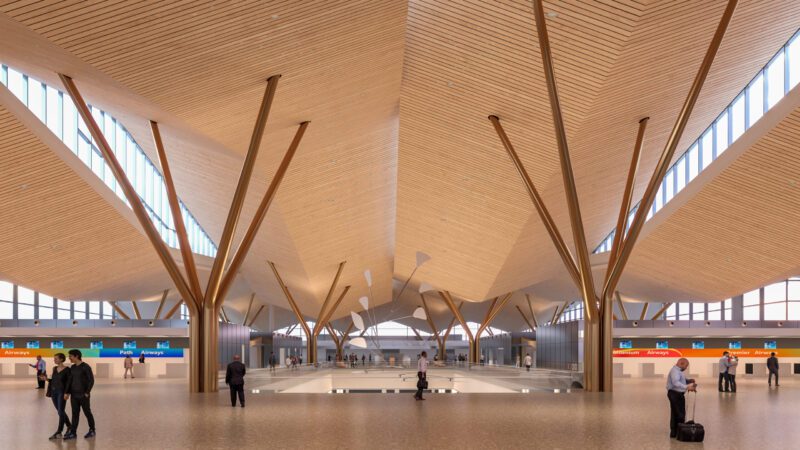
A view of the departures level from the main entrance of PIT’s new terminal that will feature airline ticket counters and the main security screening checkpoint. (Renderings courtesy of Gensler + HDR in association with luis vidal + architects)
Inspired by Nature, Technology, Community
“When [visitors] walk in, I hope they go, ‘Wow.’ It represents your city, your region, and this is going to change everything for Pittsburgh,” said Rick Lee, implementation manager for the new PIT with Paslay Group. Lee has been a liaison between the architectural team and the airport, helping to transform the architectural design into a reality.
Building connectivity into architecture is a novel idea for an airport. The principle of enhancing the passenger experience through spatial relation to a region, its industry, its history and its people helps enrich air travel.
Guided by the NaTeCo design concept, the new PIT will impart a sense of the familiar — home — while introducing visitors to Pittsburgh.
“The use of nature — natural light, ventilation, color, vegetation, outdoor activity — all those things are very rare in an airport,” said Vidal, “and this will be one of the very first airports in the world to take advantage of all these possibilities.”
The environment is also reflected in the new terminal’s structural tree columns, its roof representing the rolling hills of the region and its four green terraces, showcasing native plants and hydrated with rainwater collected from roof.
Technology is woven seamlessly into the design concept. While many of the improvements will operate in the background, travelers will notice that the security checkpoint and baggage claim are modern and faster.
Pittsburgh celebrates a number of special traditions. We put fries on our food, wave towels at sporting events and come to the airport to meet and greet friends and loved ones.
It is known as the “meeter-greeter phenomenon,” and it is something the Pittsburgh community endearingly does with statistical significance.
“With the NaTeCo concept, we looked at every element of the design from the time a passenger or meeter-greeter would enter the property,” said Bill Peduzzi, senior vice president, aviation, with HDR. “The [Allegheny County Airport] Authority really challenged us to bring the passenger and the meeter-greeter experience to a whole different level.”

